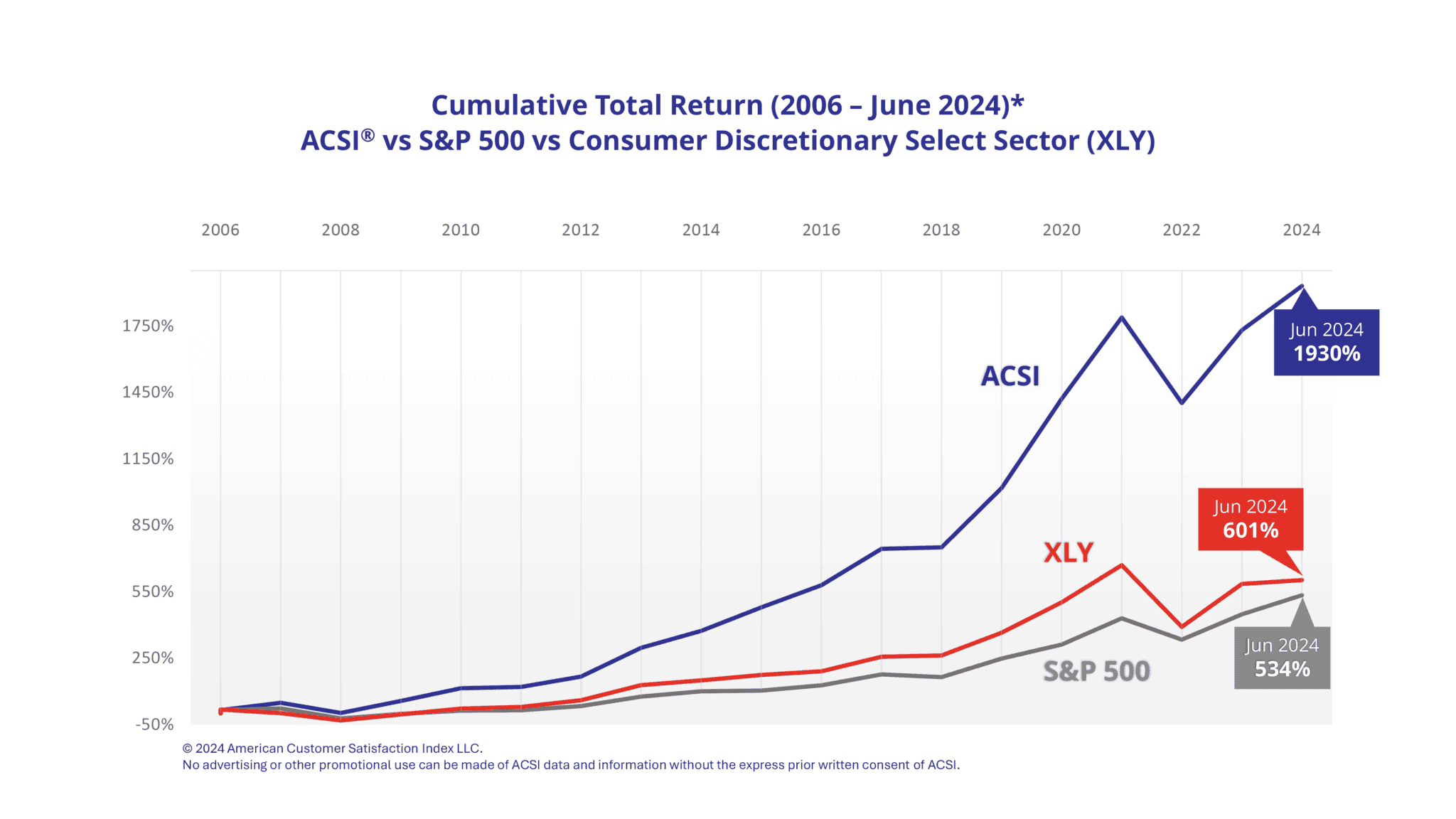Companies with high levels of customer satisfaction, as measured by the American Customer Satisfaction Index (ACSI), typically do very well in the stock market. This is because they tend to have strong customer loyalty, which, in turn, has exponential positive effects on profit and revenue growth. A stock portfolio of the top scoring 30-35 ACSI companies in their respective industries, weighted by customer satisfaction elasticity to customer retention, reveals something extraordinary: A reversal of both the law of diminishing returns and the notion of high risk/high return. Accordingly, investments in the top ACSI companies tend to produce above market returns and lower risk.

From January 2006 through June 2024, the ACSI Leaders portfolio generated a cumulative return of 1,930% versus 534% for the S&P 500 and 601% for the Consumer Discretionary sector, with corresponding annualized returns of 17.7% for the ACSI Leaders portfolio and 10.5% for the S&P 500.
Beginning in 2020 as a result of the global pandemic, there were supply constraints, labor shortages, and inflation, followed by a host of market anomalies. These issues affected not only the stock market but the economy at large. Inflation, in addition to supply constraints and labor shortages, led to an environment where consumer demand exceeded supply in many markets. This took place during a period when customer satisfaction declined substantially, with the national ACSI score dropping by a record amount from the first quarter of 2018 to the second quarter of 2022. When demand exceeds supply, there is less competition and customer satisfaction becomes less critical. Since the middle of 2022, partly due to lower buyer expectations, customer satisfaction has rebounded, rising to a new all-time high in the first quarter of 2024.
Thus far, however, the positive market returns in 2024 have been driven by a subset of very large companies and sectors not included in the ACSI. The absence of these sub-sectors (such as AI and Microchips) in the portfolio accounts for virtually all the ACSI’s below market returns in 2024. For instance, YTD through June, OVER 100% of the ACSI portfolio’s relative underperformance vs the S&P 500 is due to being underweight (and underperforming) the Technology sector. A more appropriate benchmark may be the Consumer Discretionary Select Sector (XLY), ACSI’s largest sector exposure, which is only up 3.4% YTD through June 2024 – trailing the ACSI portfolio by 7.5% and trailing the S&P 500 by 12.5%.
Despite the rise in customer satisfaction, however, not all market anomalies have evaporated. Nevertheless, for the YTD 2024 time period, the ACSI selected leaders outperformed in Consumer Discretionary (+17.7% vs. +5.7%), Consumer Staples (+15.8% vs. +9.0%) and Financials (+13.1% vs +10.2%)
For more information on ACSI as a financial signal, please contact Josh Blechman [email protected].
*The excess return provided from a portfolio of customer satisfaction leaders can easily be verified using publicly available ACSI data.